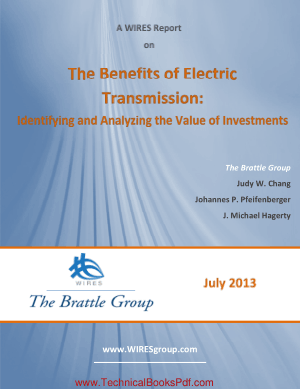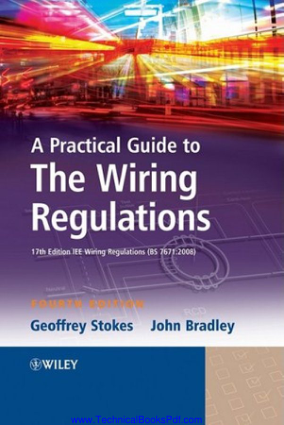Table of Contents
Preface ………………………………………………………………………………………………………………………………….4
Module 1 – AC Signal Overview ………………………………………………………………………………………………….5
Section 1.1 – AC Introduction …………………………………………………………………………………………………………………5
Section 1.2 – Sinusoids ………………………………………………………………………………………………………………………….6
Section 1.3– Defining AC Voltage Types for Common AC Waveforms ……………………………………………………… 12
Section 1.3.1 – Peak and Peak to Peak Voltage ………………………………………………………………………………….. 15
Section 1.3.2 – Average Voltage ………………………………………………………………………………………………………. 16
Section 1.3.3 – Root Mean Square (RMS) Voltage ……………………………………………………………………………… 16
Section 1.4– Sine Wave, Square Wave, and Triangle Wave Example Problems …………………………………………. 18
Section 1.4.1 – Example Calculations of Vpp, Vpk, Vavg, and Vrms for Sine Waves ……………………………….. 18
Section 1.4.2 – Example Calculations of Vpp, Vpk, Vavg, and Vrms for Square Waves ……………………………. 20
Section 1.4.3 – Example Calculations of Vpp, Vpk, Vavg, and Vrms for Triangle Waves ………………………….. 23
Module 2 – AC Circuits Math Background ………………………………………………………………………………….. 26
Module 3 – RLC Circuit Analysis with AC Sources …………………………………………………………………………. 32
Section 3.1 – Introduction of Impedance and Admittance and the Laplace Transform ………………………………. 32
Section 3.2 – Series RLC Circuits ………………………………………………………………………………………………………….. 33
Section 3.3 – Parallel RLC Circuits………………………………………………………………………………………………………… 41
Section 3.4 – AC Power Calculations ……………………………………………………………………………………………………. 44
Section 3.5 –AC Maximum Power Transfer …………………………………………………………………………………………… 50
Module 4 – Passive Filters ………………………………………………………………………………………………………. 53
Section 4.1 – Low Pass Filters (LPF) ……………………………………………………………………………………………………… 54
Section 4.2 – High Pass Filters (HPF) ……………………………………………………………………………………………………. 57
Section 4.3 –Band Pass Filters (BPF) …………………………………………………………………………………………………….. 59
Section 4.4 –Band Stop Filters (BSF) …………………………………………………………………………………………………….. 66
Module 5 – Transformers ……………………………………………………………………………………………………….. 68
Module 6 – Diodes and AC to DC Conversion ……………………………………………………………………………… 72
Section 6.1 – Diode Constant Drop Model ……………………………………………………………………………………………. 73
Section 6.2 – Diode Logic Circuits ………………………………………………………………………………………………………… 78
Section 6.3 – Protection Diodes ………………………………………………………………………………………………………….. 79
Section 6.4 – Rectifiers ………………………………………………………………………………………………………………………. 80
Module 7 –Operational Amplifiers (OpAmps) …………………………………………………………………………….. 84
Section 7.1 – OpAmps Used as Comparators ………………………………………………………………………………………… 86
Section 7.2 – OpAmps used as Amplifiers …………………………………………………………………………………………….. 89
Section 7.2.1 – Inverting OpAmp Configuration…………………………………………………………………………………. 92
Section 7.2.2 – Non-Inverting OpAmp Configuration………………………………………………………………………….. 94
Section 7.3 – Superposition with OpAmps ……………………………………………………………………………………………. 95
References and Links ……………………………………………………………………………………………………………… 96
Appendix …………………………………………………………………………………………………………………………….. 98
Preface
This eBook was written as the sequel to the eBook titled DC Circuits, which was written in 2016 by Chad Davis. The DC Circuits eBook (https://shareok.org/handle/11244/52245) should be reviewed prior to reading this book. While the first book covered only DC circuits, this book covers Alternating Current (AC) circuits as well as a brief introduction of electronics. It is broken up into seven modules. Module 1 covers the theory of AC signals. Since only DC sources are used in the first eBook, details of AC signals such as sinusoidal waveforms (or sine waves), square waves, and triangle waves are provided. Module 2, titled AC Circuits Math Background, covers the mathematics needed for solving AC circuit problems. The background material in Modules 1 and 2 are combined in Module 3 to solve circuits with AC sources with resistors, inductors, and capacitors (RLC circuits).
Note: The term RLC circuit will apply to circuits that contain resistors and capacitor and/or inductors in this eBook. Therefore, the RLC term will also apply to RL and RC circuits.
Module 4 focuses on using RLC circuits as passive filters. Content that is traditionally associated with AC Circuits material ends in Module 4, but additional content is included in Modules 5 to 7 to provide more practical knowledge that builds upon the theory learned in AC circuits. Topics in these final three modules include transformers, diodes, and operational amplifiers. These topics in Modules 5 to 7 are the foundation of the field of electronics. Only an overview is provided in this eBook, but if it peaks your interest http://www.allaboutcircuits.com/textbook/semiconductors/ has a detailed open source eBook on electronics.
An important thing to realize is that most of the information covered in DC circuit theory also applies to AC circuit theory. In fact, it is a good idea to think of a DC signal as one that can be obtained by freezing time in an AC signal and looking at the “instantaneous” voltage or current values at that moment in time. With this in mind, it should be apparent that KVL, KCL, Ohm’s law, and all of the other primary equations used in DC circuits also apply to AC circuits, since the AC circuit is simply a DC circuit that continually changes values. While DC voltage or current signals are typically given capital letter variables (V or I), AC waveforms are given lower case variables and often written as a function of time, v(t) or i(t). In this eBook scalar values that define the different types of AC voltages and currents are given capital letters (Vpk, Ipk, Vpp, Ipp, Vavg, Iavg, Vrms, Irms, and A) as defined in Module 1.
One goal of this book is to provide practical information to better equip the reader to put circuit theory into practice. The picture on the cover of this book shows an example of a RLC circuit built on a breadboard. After the completion of this book you will understand how RLC circuits work and many of the applications they are used for, as well as obtain a foundation in electronics. While providing practical information, this eBook tries to avoid going into too many tangents that result in numerous pages being skipped over by the reader. Links are provided throughout the eBook where more background information is available when I felt the temptation to depart from the main point. Many of the links come from allaboutcircuits.com, which is a very good open educational resource. If a link doesn’t open copy it into your browser or search for the document title online.
The circuits in this eBook are created with a user friendly circuit drawing and simulation tool called Multisim. Creating new circuits and simulating them to verify that your calculations are correct is a good way to hone your circuit analysis skills. By providing an explanation of how to verify calculations in Multisim, this eBook enables the reader to create more complicated problems, while having a method to check the results. This is vitally important with AC circuits because the complex algebra involved in solving them is very tedious and mistakes are frequently made by students that are learning the problem solving techniques. The DC probes and Multimeters were used extensively in the DC Circuits eBook, but in this eBook AC probes and the MultiSim oscilloscope will also be used to make more complicated AC measurements.






